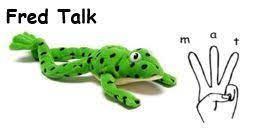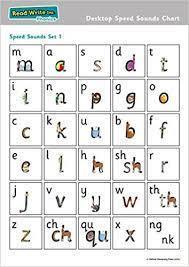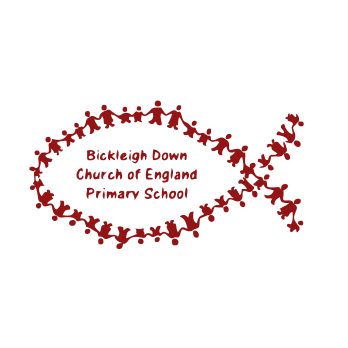Early Reading
Phonics
At Bickleigh Down, we are determined that every pupil will learn to read, regardless of their background, needs or ability. We aim to teach all children to read effectively and quickly using the Read Write Inc. Phonics programme (RWI) starting as soon as they join in Reception. The RWI programme, which includes teaching synthetic phonics, sight vocabulary, decoding words as well as spelling and accurate letter formation enables children to learn a simple alphabetic code followed by a more complex code. All reading books progress cumulatively, matched to the sounds children are learning and already know.
The teaching of phonics is of high priority. We believe that Read, Write, Inc (RWI) phonics provides the foundations of learning to make the development into fluent reading and writing easier. Children learn to read fluently and at speed so they can focus on developing their skills in comprehension, vocabulary and spelling.
Your child will be assessed and grouped according to their phonics ability, working in small groups with a teacher or teaching assistant.
Assessment
Assessment is a critical element of our phonics programme. The teachers assess pupils’ phonic knowledge, the speed at which pupils are able to read the text as well as their understanding of the stories they read.
Assessment opportunities are built into every RWI lesson. Choral response group work and partner work alongside the small group size allows teachers to evaluate pupils’ phonic knowledge and hence modify the pace and focus of their lessons. These ongoing assessment opportunities provide teachers with knowledge of which children are making slow, steady or speedy progress and hence they can liaise with the Reading Leader to provide additional support (for children making slower progress) or an immediate assessment (for pupils making speedy progress) to allow such pupils to change group.
In addition to the ongoing assessment opportunities, all pupils are assessed every 6-8 weeks, or more frequently for those making speedier progress, using RWI Assessment materials. The materials assess a pupils’ sound to grapheme correspondence, ability to apply phonic knowledge to decode regular words and to read common exception words. Children are grouped by the teachers in each year group and this is monitored by the Reading Leader. Pupils’ reading fluency is also checked and assessed. Pupils’ progress is tracked to record their phonic knowledge and decoding skills as well as fluency. This information is used to reorganise groups, RWI matched phonics reading level and the focus of the phonics input of the lessons. Assessment information is also used to provide updates to parents via Parents’ Evening updates or more specific meetings with parents.
Learning Set 1 Speed Sounds
These are the Set 1 Speed Sounds written with one letter:
- m a s d t i n p g o c k u b f e l h r j v y w z x
These are the sounds written with two letters (your child will call these ‘special friends’):
- sh th ch qu ng nk ck
Check if your child can read these sounds. Make sure they say sounds like ‘mmm’, not letter names like ‘em’.
Watch the Sound Pronunciation video guide below to help you.
Sound Pronunciation Video
Learning to blend with Set 1 Speed Sounds
Your child is learning to read words containing Set 1 Speed Sounds by sound blending. For example:
- m-a-t mat
- c-a-t cat
- g-o-t got
- f-i-sh fish
- s-p-o-t spot
- b-e-s-t best
- s-p-l-a-sh splash.
If your child is learning to sound blend, watch the Sound Blending video for tips on how to support them.
Learning Set 2 Speed Sounds
These are the Set 2 Speed Sounds:
- ay ee igh ow (as in blow) oo (as in zoo)
- oo (as in look) ar or air ir ou (as in out) oy
Check if your child can read these sounds.
If your child is learning the Set 2 Speed Sounds, you could help them to:
- Complete the Speed Sounds practice sheets for the Speed Sounds they have learnt.
- Read these free eBooks at Red Ditty level, then Green level and then Purple level, in order. We recommend children read each eBook three times, as they would at school: once to read the words correctly, a second time with more fluency, and a third time in a ‘storyteller voice’ that shows their understanding.
Learning Set 3 Speed Sounds
These are Set 3 Speed Sounds:
- ea (as in tea)
- oi (as in spoil)
- a–e (as in cake)
- i–e (as in smile)
- o–e (as in home)
- u–e (as in huge)
- aw (as in yawn)
- are (as in care)
- ur (as in nurse)
- er (as in letter)
- ow (as in brown)
- ai (as in snail)
- oa (as in goat)
- ew (as in chew)
- ire (as in fire)
- ear (as in hear)
- ure (as in pure)
Check if your child can read these sounds.
If your child is learning Set 3 Speed Sounds, you could help them to:
- Complete the Speed Sounds practice sheets for the Speed Sounds they have learnt.
- Read the eBooks at Pink level, then Orange level and then Yellow level, in order. We recommend children read each eBook three times, as they would at school: once to read the words correctly, a second time with more fluency, and a third time in a ‘storyteller voice’ that shows their understanding.
If your child has learnt all three sets of Speed Sounds, they need to practise them and read books with words made up of those sounds. They could:
Complete the Speed Sounds practice sheets for the Set 3 Speed Sounds.
Read the eBooks at the Blue level and then the Grey level, in order. We recommend children read each eBook three times, as they would at school: once to read the words correctly, a second time with more fluency, and a third time in a ‘storyteller voice’ that shows their understanding.
Here are some tips to help children of all ages to enjoy reading and to get reading more often.
- Take breaks while reading.
- Build reading into your child's daily routine.
- Encourage your child to follow their interests.
- Use technology together.
- Encourage your child to be the author, retell or make up stories.
- Have a chat.
Listening to your child reading is important. However, your child hearing your read or tell a story is just as important. This will support them to develop new vocabulary, learn how to use expression in their voice. Encourage your child to decode the sounds e.g. segmenting or drawing on sound buttons. When you are out and about read signs around you. Practise speed reading the sounds your child has been learning in school.
My child won’t read, no matter what I do. How can I help?
- Read to your child as much as possible
- Don’t make an issue out of it
- Talk to your child’s class teacher - working together will help
What is Fred Talk?
If your child’s school is using Read Write Inc. Phonics, teachers will introduce your child to a toy frog called Fred once he or she is ready to start reading words.
Fred can only say the sounds in a word and needs your child to help him read the word. Fred will say the sounds and children will work out the word. For example, Fred will say the sounds c–a–t, and children will say the word cat. This is Fred Talk: sounding out the word.

Speed Sounds
When teaching your child phonics, we will use the term 'speed sounds', these are individual sounds which your child will learn how to read quickly and effortlessly as they progress through Reception, Year 1 and Year 2. Your child will be regularly assessed to ensure they are reaching their full potential and will receive additional booster sessions if appropriate.

Useful Terminology
- phoneme – A phoneme is the smallest unit of sound in speech, this may be one letter, or a group of two or three letters which make one sound.
- blend – to draw individual sounds together to pronounce a word, e.g. s-n-a-p, blended together, reads snap.
- segment – to split up a word into its individual phonemes (sounds) in order to spell it, e.g. the word ‘cat’ has three phonemes: c – a – t,
- sound buttons – the number of phonemes (sounds) in a word, your child will be encouraged to draw a dot under a single letter to denote the number of sounds, if it is a digraph they will underline both sounds instead of drawing a dot. For example ai in snail.
- grapheme – A grapheme is a letter or a number of letters which represent a sound (phoneme) in a word.
- grapheme-phoneme correspondence (GPC) – the relationship between sounds and the letters which represent those sounds; also known as ‘letter-sound correspondences’. This means that your child will be able to recognise and/or identify the written form of a letter when listening to the sound.
- digraph – A digraph is a single sound, or phoneme, which is represented by two letters like ‘ow’ as in ‘s-n-ow’ reading ‘snow’.
- split digraph – two letters (consonants), split by another letter (vowel), but which make one sound, e.g. a-e as in make or i-e in site.
- trigraph – A trigraph is a phoneme which consists of three letters like ‘air’ as in ‘hair‘. Three letters making one sound.
